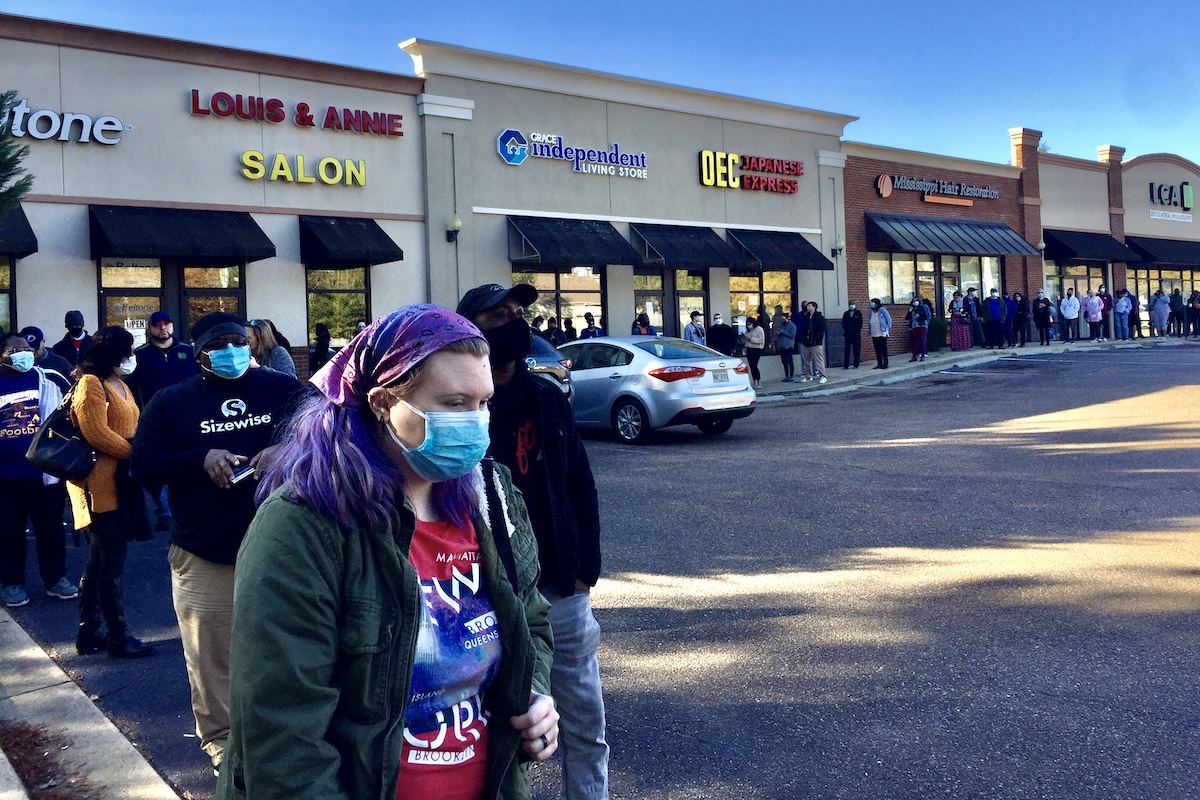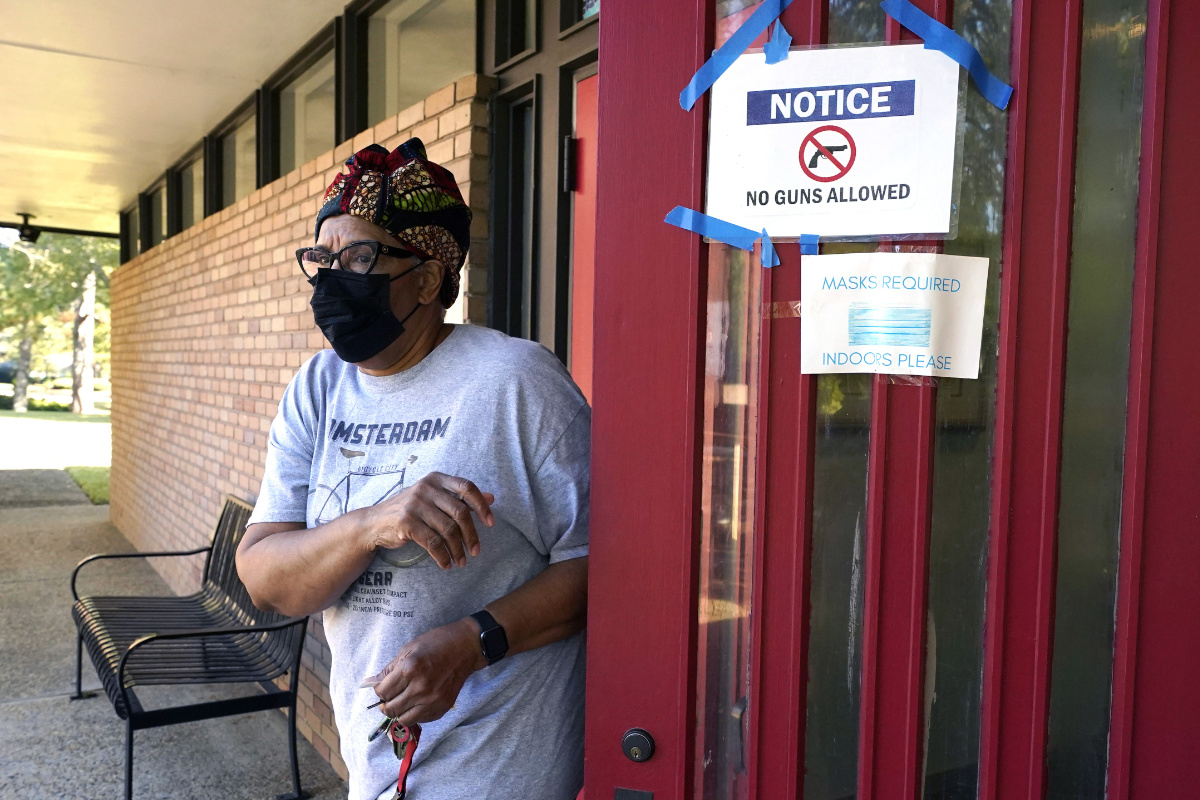County election officials in Mississippi have made at least 98 polling place changes since the 2020 election, with 28 changes since the June 2022 primaries, a Mississippi Free Press investigation finds. During that period, officials have relocated precincts 64 times, closed 19 precincts and opened 12 new precincts.
In many cases, the changes were not reflected in the Statewide Elections Management System, the database that the Mississippi Secretary of State’s polling-place locator tool relies on to give voters accurate information, as of mid-October. Errors in SEMS risk sending voters to the wrong polling place, an issue many voters reported during the 2020 election.
Mississippi voters can see the precinct changes we have identified since June 2022 with the table below, which includes a search option. A separate table showing changes that officials made between the November 2020 general election and the June 2022 primaries is available here.
In an Oct. 31 letter to Mississippi county supervisors, election commissioners and circuit clerks, a coalition of eight civil-rights groups noted that election commissioners “are specifically responsible for submitting updates to SEMS regarding polling locations.”
“Commissioners must do so immediately. Under Mississippi law, Election Commissioners are responsible for electronically maintaining the voter rolls in the SEMS database and must update the rolls to reflect changes,” said the letter. Representatives of the Legal Defense Fund, the ACLU of Mississippi, the Southern Poverty Law Center, the Mississippi NAACP, Disability Rights Mississippi, the Mississippi Black Women’s Roundtable, One Voice and the Mississippi Center For Justice signed the letter.
The coalition previously sent a letters to Mississippi Secretary of State Michael Watson in the spring and in early October urging him to use his authority to issue rules requiring local election officials to ensure information in SEMS is accurate and up-to-date. In reply, he claimed he does not have the authority to do so without legislative action. He argues that Mississippi is a “bottom-up state” where his role is focused on overseeing elections and training local officials, but that counties are responsible for keeping information up-to-date, not the state. The civil-rights coalition disagrees.
“Without accurate reporting, the Secretary’s poll locator will contain inaccurate information, and thousands of Mississippians rely on the poll locator to identify their polling location. Compliance is critical, so no matter your office, please be proactive,” the coalition wrote in their Oct. 31 letter to election officials in the state’s 82 counties.
Since 2020, the Mississippi Free Press’ investigations, which the coalition cited in its letter, have found that officials in dozens of counties routinely fail to update SEMS with accurate polling place information.
Unlike many other states, the State of Mississippi does not provide an up-to-date, comprehensive list of polling places to the public. To identify the most recent changes, the Mississippi Free Press requested information from election officials in all 82 counties and made a public-records request for a PDF copy of an October 2022 SEMS report.
MFP journalists found dozens of discrepancies between the information some county election officials had entered in SEMS and the information they individually provided us by email or on county websites. A number of apparent changes listed in documents county officials provided were not in the statewide SEMS report, or vice versa. In some cases, what appeared to be changes were not and turned out to be erroneous entries.
The team worked to sort out the discrepancies by calling circuit clerks and election commissioners in order to assemble the list below.
Additionally, the investigation found that more than 100 precincts listed in SEMS as of Oct. 13, 2022, included no addresses, incorrect addresses or incomplete addresses.
Other issues we found are described below.
Address Problems
More than 100 precincts in SEMS either include no address, incomplete addresses or incorrect addresses. After we requested addresses for a group of precincts in one county, an election official provided us with a list of partial addresses that did not include road numbers or street names. We asked for complete addresses from that county but have not received a response.
In another instance, we called Pike County election officials to confirm the address of one precinct, but across three phone calls received three different addresses for the same polling place. The county election officials ultimately deferred to Google Maps, rather than SEMS or their own data, for the correct address, which was a combination of the first two offerings.
Without complete or accurate address information, the polling-place locator will not work, and voters may have difficulty finding their polling place using GPS.
Improper Use of Fields
SEMS has fields for both “Precinct Name” and “Polling Place” for each precinct, but many counties use these fields incorrectly. “Precinct Name” is supposed to be used to identify the geographical area that comprises the precinct’s district and its voters, while “Polling Place” is supposed to indicate the physical location of the polling place.
For instance, Adams County has a precinct named “Bellemont Precinct,” and the corresponding polling place is “Crosspoint Church.” While Adams County uses these fields correctly, others do not.
Amite County has one precinct where the “Precinct Name” and “Polling Place” name are both “Vance Park.” Using the precinct name in both fields can make it hard to know which building is serving as the polling place, while using a polling-place name in both fields can result in the “precinct name” changing each time the polling place does, making it harder to keep track of changes.
Pike County’s precinct that uses the Precinct Code “24” was originally at St. Mary’s of the Pines in 2020, but moved to Critter’s Crossing in the 2022 primaries. It has since moved back to the 2020 polling place, but that location has now changed its name to “Our Lady of Hope.” Since Pike uses polling-place names as its precinct names, that precinct’s name has repeatedly changed, too.
Lack of Standardization
Methods vary from county-to-county, with no standardized schemes for entering data. For instance, the “Precinct Codes,” which are short identifiers for individual precincts, vary from county-to-county.
For example, Amite’s precinct codes each follow a standard three-digit numerical code, with the first digit identifying which county district it is located in and the latter two denoting the individual precinct. But Montgomery uses precinct codes to abbreviate Precinct Names, such as using “MTP” for the “Mt. Pisgah” precinct. Hinds County partly uses a number scheme for some of its precincts and an abbreviation scheme for others.
Simpson uses precinct codes to write shortened versions of the precinct names, with the “Magee 4 North” precinct code listed as “Magee4N.” While Amite’s codes make it easy to see which district a precinct is in, other counties’ precinct code-naming schemes are more cumbersome and do not communicate information about the precinct’s district. SEMS does list which district precincts are in, making it more time-consuming to identify which election commissioners are in charge of each precinct—an issue Amite’s scheme would remedy if others adopted a similar one.
No Data Validation
The SEMS software does not appear to require data to be validated before submission. For instance, web forms often have fields that users are required to fill out. Some webforms require users to properly fill them out with accurate data, such as an email field that will not submit if the part of the email address that includes an “@” and a domain name are not included, or which will not accept a word in a phone number field.
But in SEMS, county election officials are able to submit incomplete forms that leave key fields blank or incomplete, such as the address field.
Confusing Polling-Place Changes
Some polling-place changes, even when entered correctly in SEMS, were difficult to understand and required phone calls for clarity. In Hancock County, election officials decided to split an old precinct, Diamondhead East, in two, creating a new precinct. They discovered their new precinct, Diamondhead Central would, in fact, be located to the east of the pre-existing Diamondhead East precinct.
Instead of allowing the geographic inaccuracy to stand (or using a different naming scheme), county officials moved Diamondhead East to the polling location they had planned for the new precinct and gave the new precinct, Diamondhead Central, a new precinct code, precinct name, and a new polling-place name but at the old address of what had been Diamondhead East. This ensured that Diamondhead Central would be located to the west of the new Diamondhead East location.
Confused? So were we.
Hidden Redistricting
In some cases, county election officials redraw precinct lines, a change that is typically imperceptible in SEMS because it means shuffling voters around without necessarily changing the precinct itself. This happened in Madison County ahead of the 2020 election, when officials quietly moved thousands of voters from precinct to another between the primary and general election. Many reported that officials did not notify them of the change and that they waited in long lines at the wrong precinct before learning about the change.

Decennial redistricting will occur statewide in 2023 based on the results of the 2020 census, but counties occasionally make small changes to districts in the years between, too.
Some County Sites Provide Information, Others Don’t
While the State of Mississippi does not provide a public-facing list of precincts, some counties do provide their own county-level lists of precincts on their websites, though some are out-of-date. Some of the county websites are difficult to navigate.
Lincoln County does not provide a list on its county’s website, but instead Circuit Clerk Dustin Bairfield’s personal website, www.dustinbairfield.com, provides a link to a DropBox folder that, among other things, includes a PDF of the county’s SEMS report from January 2022. Many county websites do not provide precinct information at all, however.
Confused Election Officials
On Election Day 2022, four days after the Mississippi Free Press published this list, voters in Hinds County's Precinct 45 told the Mississippi Free Press that they went to the polling place listed in SEMS and offered by county election officials, McLeod Elementary, but were told the precinct had moved to its former location prior to the 2020 general election: St. Philip's Episcopal Church. This was not a change this publication had reported on because none of the officials we contacted told us about the change and none of the lists we acquired showed the change.
After the first voter reported this to the Mississippi Free Press on the morning of Tuesday, Nov. 8, 2022, a reporter called the Hinds County Circuit Clerk to confirm the information at 11:21 a.m. An official in the office assured the reporter that the precinct remained at McLeod Elementary. Later, though, another voter told the Mississippi Free Press that they, too, were turned away at McLeod Elementary and told to vote at the church. The reporter called the circuit clerk's office back at 12:29 p.m., where an official again said McLeod was the correct precinct location. Asked why voters would report otherwise, the official said to call the Hinds County Election Commission because they handle precinct issues.
The reporter then called the Hinds County Election Commission at 12:32 p.m., where an official said the precinct is still at McLeod Elementary. When pressed regarding the reports from voters, the official then engaged in a conversation with other officials in the office, with multiple people engaging in a confused back-and-forth conversation about Precinct 45. Finally, an Election Commission official said that they have, indeed, moved Precinct 45 back to St. Philip's Episcopal Church, where it was located before the COVID-19 pandemic necessitated the change. Despite this team's best efforts, confusion among election officials themselves complicates the effort to obtain accurate lists of voting precincts.
Non-Responses
While the vast majority of local circuit clerks and election officials we contacted were generous with their time and willing to help us sort through discrepancies and other sources of confusion, election officials in a small handful of counties did not respond to emails or attempts to reach them by phone, forcing us to go by the data in SEMS. As a result, it is possible that there are additional changes beyond those we found and included here.
Election is Tuesday, Nov. 8, 2022
Voters go to the polls in all four of Mississippi’s congressional districts on Tuesday, Nov. 8, 2022, to elect U.S. House representatives for their districts. Secretary of State Michael Watson has repeatedly urged voters to verify their vote registration is active by checking online at this link.
When they arrive at the polls, voters must bring an acceptable form of photo identification, such as a driver’s license, state-issued photo ID, U.S. passport, government employee ID card, student ID from a state university or college, firearms license, tribal ID or a Mississippi Voter Identification Card. Information on how residents can obtain a free voter-identification card from their local circuit clerk’s office is available here.
Voters are eligible to cast a ballot if they registered at least 30 days before the election. More information on voting is available on the Secretary of State’s FAQ section and Voter Information Guide.
Editor’s Note: The Black Voters Matter Fund provided support for the Mississippi Trusted Election Project’s Phase 2 precinct-change research.
This story was updated on Tuesday, Nov. 8, 2022, to note an additional unreported change in Hinds County.






